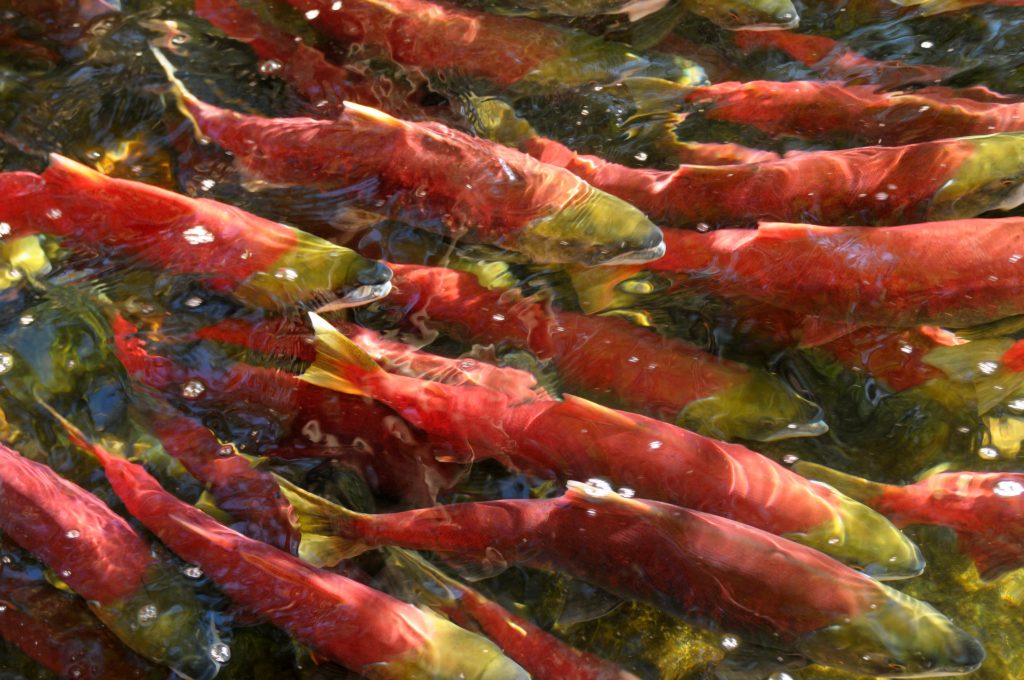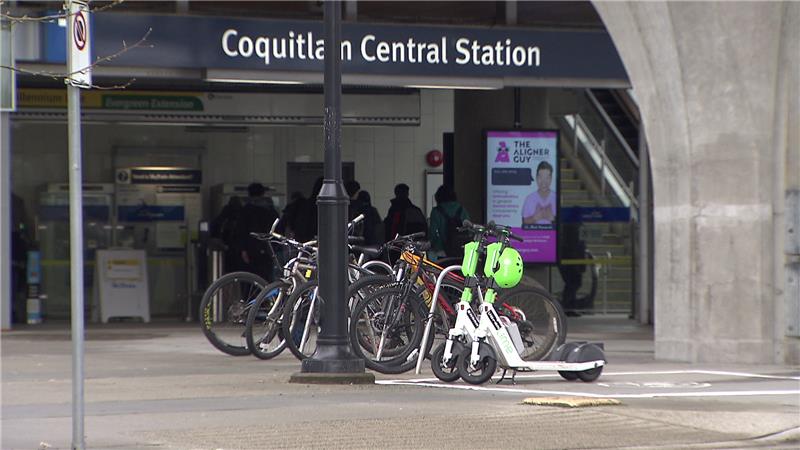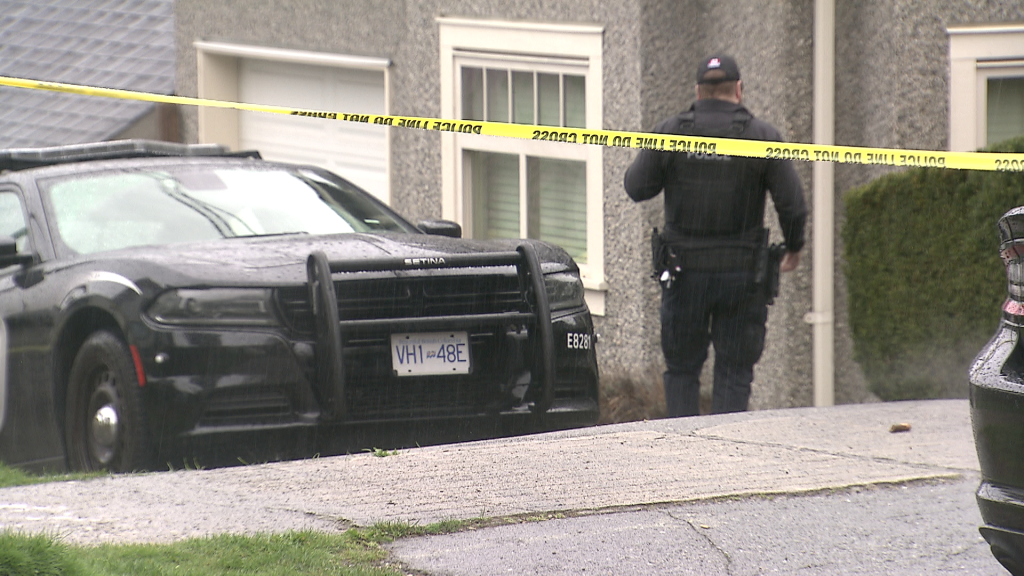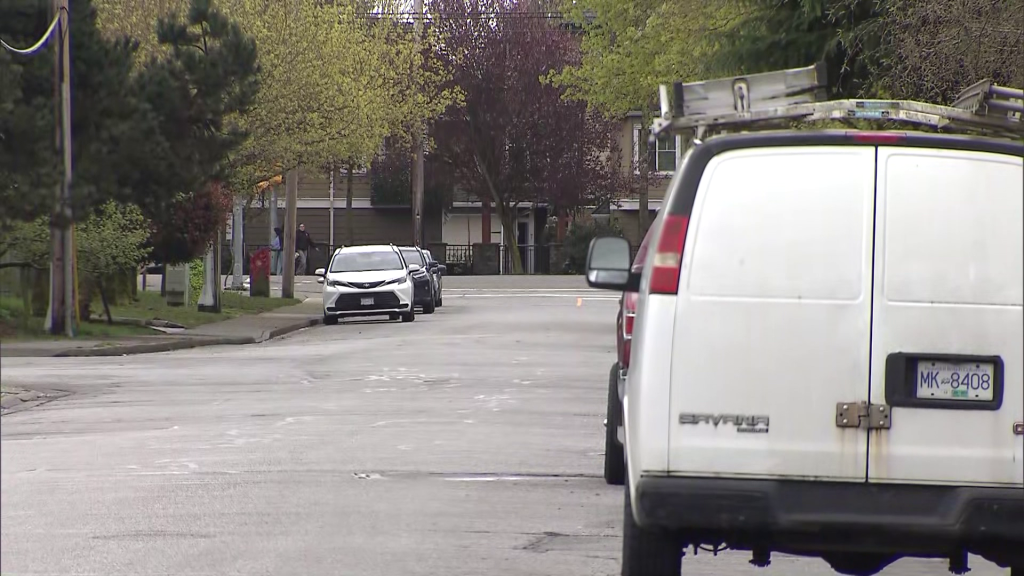Major concerns for B.C.’s salmon population as drought drags on

Posted October 14, 2022 7:33 am.
The dire consequences of B.C.’s prolonged drought are becoming more understood, as we continue to wait for any rain to fall here in B.C, and some experts are sounding the alarm bell on our salmon population.
The main concern is they’re not able to spawn in local creeks and rivers, which are drying out rapidly. That is not normal for this time of year.
Pete Willows, part of Cougar Creek Stream Keepers which tries to protect salmon habitats, says efforts to coax the fish upstream are failing. “The actual flow of water, the amount of water we’re getting in the system is a little bit too light and it’s not encouraging the fish to come out of the Fraser River.”
Related Articles:
-
Metro Vancouver staff concerned unseasonably dry weather will continue moving forward
-
Drought and moths push the trees of Vancouver’s Stanley Park to the brink
-
BC Hydro tries to conserve water and protect fish
In addition to the lack of rain, Willows say the higher-than-normal temperatures we’ve been experiencing as of late, are also problematic.
“They wait for that first flush of water to come in from the first rains and that sort of draws them in and then they feel comfortable coming into the system, and they’ll do their spawning. When you start getting rain then that increases the width of the creek and the depth of the creek and that’s when you encourage the salmon to come in from the Fraser River.”
The group says a perfect start would be some steady drizzle, which is not near in the forecast at this time.
Right now, the Lower Mainland, Sunshine Coast, and West Vancouver Island are at drought level 5, the most severe in the province.
A silver lining for farmers
Farmer Amir Mann says the drought brings some benefits compared to other recent weather extremes.
Mann, who runs Mann Farms in Abbotsford, harvests a variety of crops including strawberries, raspberries, blueberries, pumpkins, and grapes.
He says the downside of the drought is offset by benefits like a longer harvesting period and little rot, which is often brought on by wet weather.
Mann says irrigation is essential and notes farms without sophisticated systems, that rely on rain to water their crops, have likely fared worse.
Related Video:

B.C. Agriculture Council president Stan Vander Waal agrees fall’s dry weather has been useful to many farmers, particularly following a wet spring.
He says he doesn’t foresee any major long-term impacts on agriculture unless the drought extends through the winter — but that’s too early to predict right now.
Vander Waal says a potential concern is that government-imposed water restrictions could impact irrigation and argues farmers should be prioritized.
He’s also calling on the government to implement a more sustainable water storage system that takes advantage of heavy rainfall to prepare for prolonged dry spells that may start to occur more frequently.
Warning from Metro Vancouver
Water use in Metro Vancouver is much higher right now, while reservoir levels are lower than normal, prompting the regional district to ask millions of people and businesses to conserve.
The regional district says water use is up by 20 per cent for this time of year because of the extended dry, warm weather.
It says the area’s watersheds have received about 50 millimetres of rain since the start of August, when it would typically see about 400 millimetres between Aug. 1 and Oct. 1.
The district says cutting back on tap water use, both indoors and outdoors will help conserve “precious treated drinking water” for where it’s needed most like, cooking, cleaning, and drinking.
It’s asking people to hold off on watering their lawns and encouraging people to take shorter showers — which are supposed to be three to four minutes.
Province prepared for possible flooding
The B.C. government says it’s ready to deploy sandbags and tiger dams in case flooding follows the drought.
Emergency Management BC says when rain falls after long dry spells, the parched soil can increase runoff and river flow.
It says the transition to the rainy season doesn’t typically cause extensive flooding and the devastation wreaked by last year’s atmospheric rivers was rare.
However, it adds flooding is natural in B.C. and people living near streams and rivers, that have breached their banks in previous years, are encouraged to keep an eye on the weather and river conditions.
It’s also asking residents to prepare by making household emergency plans, putting together emergency kits, and learning about local government response plans for their areas.
The government says it has four million sandbags prepared, plus 10 kilometres of gabions, a wall-like structure filled with sand, and 32 kilometres of tiger dams, the stackable orange tubes filled with water.
–With files from The Canadian Press








